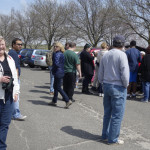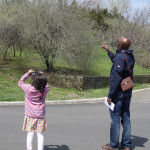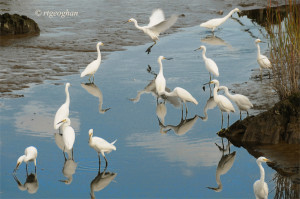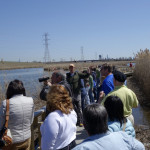 Part Two of the BCAS Birding for Beginners course was another hit yesterday afternoon! This time forty-two people listened as Don Torino talked about optics and field guides. Don called these the essential equipment for any birder. He encouraged folks to test binoculars themselves before buying. Audubon had several pairs on hand to loan for the walk.
Part Two of the BCAS Birding for Beginners course was another hit yesterday afternoon! This time forty-two people listened as Don Torino talked about optics and field guides. Don called these the essential equipment for any birder. He encouraged folks to test binoculars themselves before buying. Audubon had several pairs on hand to loan for the walk.
Then we walked a loop around the Marsh Discovery Trail. It was chilly along the wide-open Shorewalk but warmer in the shelter of the phragmites. We saw an Osprey, Great Egret, a pair of Widgeons, several Red-wing Blackbirds, lots of Mallards, and a group of Ruddy Ducks, among others. We also saw two spotted turtles sunning themselves on a partially-submerged log.
Thanks to the BCAS volunteers who shared their expertise and energy.





























